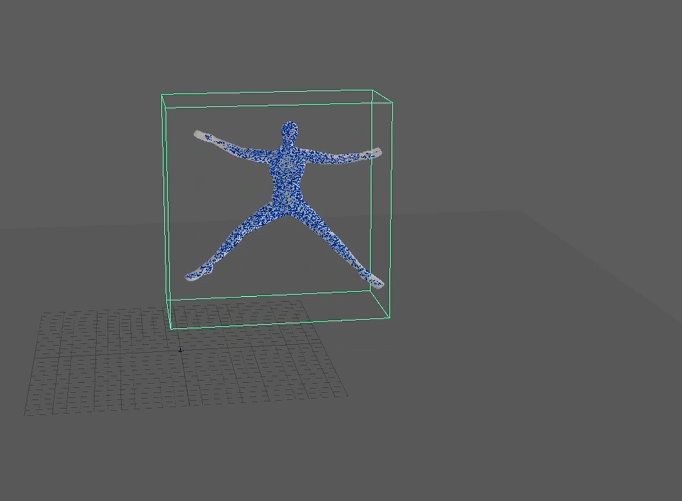MoCap W4 24: Planning and Bifrost Practice
- Hannah Chung

- Mar 28, 2024
- 3 min read
Updated: Apr 11, 2024
Update on my project: I seem to have settled on this song from TuneTank for my dance. The song is too long so I will be clipping it from about 0:25 to about 0:54 and then merging it with the first dissipating note at the end so that the piece has a nice fade as the person melts.
Then I did some research into dance styles I like. At first I thought I'd stick with a traditional ballet style for the beginning but then I found this video by NOWNESS called 'Dancing in a Human Sculpture Garden'. I think their movements accurately depict the strained yet fragile appearance I'm trying to channel into the sculpture of my project and it will be a lot easier for my dancer to replicate these free style moves than any fancy ballet moves. I also think it would be cool if the dancer stayed in one spot at the beginning like a real sculpture and just moved their arms and torso like they do in the video.
NOWNESS. (2020, February 6). Dancing in a human sculpture garden. www.youtube.com. https://www.youtube.com/watch?v=t3E0VsNWXcI
(Clip: 1:24-2:00)
Because I am extremely aware of how little I know about simulation and effects, I wanted to figure out how I was going to create the fluid effect I wanted using Bifrost. This meant I had to undergo some preliminary testing.
Test 1: The first task was filling the mesh with fluid particles. I did this by selecting the mesh and then selecting liquid in Bifrost. This was effective in filling the mesh like a volume as I had desired.
However, when I pressed play on the time slider, it became obvious that the particles were falling out of the mesh which was a real problem.
I started researching a solution but had little luck finding anything online (tutorials, reddit threads, etc.) So I just decided to play around with what had been taught in the tutorials.
Test 2: I tried creating a motion field using the mesh to influence the particles, as shown in:
This worked for about two frames before the particles would start swirling around and not staying within the mesh. From this experiment, it did give me some hope that the simulation was being influenced by the mesh, however just not the way I wanted.
Then I started panicking, thinking there's no way for the fluid to remain in the mesh if the mesh was the emitter (meaning the particles were being produced by the mesh). So I decided to find an alternative way of emitting particles into the dancer.
Test 3: I created a sphere, made it a fluid emitter, and parented it to a joint on the rig so that the sphere moved with the dancer.
This was a really cool effect that I might actually decide to use later on as it created a splashy trail effect, really enforcing that the fluid visualization idea.
As time goes on though, the particles spread further and further as more particles are emitted. This slowed down my computer processing time and also distracted from the dancer.
Test 4: Then I was thinking hmm if the fluid won't stay within the mesh, maybe I can try to block it using a polygon mesh and so I tested this theory using a cube, made it a collider and parented it to the rig.
It worked alright but it wasn't optimal, and the thinner I made the cube, the less effective the collider was as the particles began to pass through the cube due to its thinness. It would also take me ages to make a second shell mesh out of polygons plus I wanted the mesh to be fully transparent.
Test 5: Time was getting on and I felt like I was hardly getting anywhere. The most promising tests had been Test 1 and 2 where I filled the whole mesh with liquid. I played around with more settings this time. It was still emitting fluid but I noticed when I turned on 'Constant Emission', the dancer was filled with the fluid for the whole sequence which was a bit of a breakthrough.
Test 6: FINALLY. I found it. After 6 tests I noticed that there was a 'Container Attributes' section that I somehow overlooked and when changed from default 'Simulation' to 'Mesh Property' I finally got what I was looking for. The fluid was held within the mesh of the dancer WITHOUT emitting fluid out of it.
26,000 tutorials on Youtube and none of them could tell me to change dropdown button. Maybe because it was so obvious no one felt the need to explain. Who knows. That was enough experimenting for the week and I eventually gave up, satisfied with my testing results.
Here are some of the video links I watched in the making of these tests:























Comments